Vortex builds seven different product lines, from the entry-level Crossfire II to the premium Razor HD, all backed by the same VIP Warranty. That warranty creates a problem most shooters don’t see coming: every Vortex scope gets fixed for free if something breaks, but that doesn’t tell you which one actually delivers what you need before it breaks. I’ve watched hunters drop serious money on a Razor when a Viper would’ve done the job, and I’ve seen shooters struggle with a Diamondback on applications that needed exposed turrets and first focal plane glass from higher up the lineup.
I tested one scope from each of Vortex’s seven product lines—spanning entry-level hunting glass to premium tactical optics—to figure out where each line’s strengths actually lie and which models punch above their weight. The Viper PST Gen II 5-25×50 came out on top as the best overall scope in this evaluation considering its price to quality ratio.
The 7 Vortex Scopes Worth Your Money
Best Overall Value
Vortex Viper PST Gen II 5-25×50
The Viper PST Gen II sits right where Vortex’s lineup gets serious about long-range precision without crossing into Razor pricing. You get first focal plane MRAD reticles, exposed turrets with their RZR zero stop, and glass quality that handles low light better than scopes from the tiers below it. This is the scope I’d grab for everything from PRS matches to western hunting where you might need to dial past 400 yards. The Viper line also includes other magnification options to suit different shooting styles.
Best Premium Lightweight
Vortex Razor HD LHT 4.5-22×50
At just 21.7 ounces, the Razor LHT delivers premium glass in a package that won’t punish you on long mountain hunts. The weight savings come from Vortex’s premium tier, so you’re getting Razor-quality optics without the bulk of their tactical-focused models.
Best Mid-Range Value
Vortex Venom 3-15×44
The Venom bridges the gap between budget hunting scopes and serious tactical glass with a 34mm tube and first focal plane reticle at a price point that undercuts the Viper PST. Its 40 MRAD of elevation adjustment offers excellent versality, making it the smart choice if you want FFP and serious adjustment range without stepping up to Viper or Razor territory.
Best for AR Platform
Vortex Strike Eagle 1-8×24
The Strike Eagle’s true 1x at the low end and 109-foot field of view make it the obvious choice for AR-15 setups where you need both-eyes-open close quarters capability and enough magnification to reach out past 300 yards. It’s lighter than the precision-focused scopes in Vortex’s lineup and built specifically for the modern sporting rifle crowd.
Best Budget Hunting
Vortex Diamondback 4-12×40
The Diamondback 4-12×40 covers the magnification range most hunters actually use without the features they don’t need. Capped turrets keep your zero safe in a truck or on horseback, and the BDC reticle handles holdovers out to reasonable hunting distances. It’s the scope you buy when you want reliable glass without paying for tactical features you won’t use.
Best Entry Level
Vortex Crossfire II 3-9×40
This is where most shooters start with Vortex—a classic 3-9×40 hunting configuration that costs about what you’d spend on two boxes of premium ammo. The Crossfire II won’t compete with scopes three times its price, but it’ll get you on paper and hold zero through a hunting season, all covered by the same VIP Warranty as the Razor HD.
Best for Extreme Magnification
Vortex Golden Eagle HD 15-60×52
Starting at 15x and cranking to 60x, the Golden Eagle lives in spotting scope territory. This isn’t a scope for most shooters—it’s for benchrest competitors who need to see bullet holes at 600 yards or long-range guys who want maximum magnification for reading mirage and confirming impacts at distances where most scopes run out of useful magnification.
Why You Can Trust My Recommendations
My first encounter with Vortex’s product lineup happened behind the counter at Bass Pro Shops, where I spent five years in the firearms department helping customers navigate exactly this confusion. A guy would come in wanting “the best Vortex scope,” and I’d have to figure out whether he needed a $130 Crossfire for his deer rifle or if he was actually planning to dial for distance and needed the PST’s exposed turrets. The warranty meant every scope had the same safety net, but the performance gap between a Crossfire and a Razor is massive. That’s when I learned the real challenge with Vortex isn’t whether their scopes work—it’s knowing which tier delivers what you actually need.
I’m Mike Fellon, founder of ScopesReviews. I’ve been evaluating rifle optics for over fifteen years, tested more than 200 scopes, and hold NRA Range Safety Officer and Certified Firearms Instructor certifications. My father introduced me to shooting when I was twelve, and I still use that first centerfire rifle—a Ruger American in .308—for testing scopes today. I live in Dallas with my wife Jane and our three sons, and my oldest is starting to shoot with that same rifle.
Side-by-Side Specs
Here’s how these seven Vortex scopes stack up on paper. Pay attention to the tube diameter and turret style—that’s where you’ll see the biggest functional differences between Vortex’s budget and premium tiers. The FFP scopes give you a reticle that stays calibrated at any magnification, while the SFP models keep the reticle size consistent but only accurate at max power.
| Features | Vortex Viper PST Gen II 5-25×50 | Vortex Razor HD LHT 4.5-22×50 | Vortex Venom 3-15×44 | Vortex Strike Eagle 1-8×24 | Vortex Diamondback 4-12×40 | Vortex Crossfire II 3-9×40 | Vortex Golden Eagle HD 15-60×52 |
|---|---|---|---|---|---|---|---|
| Magnification | 5-25x | 4.5-22x | 3-15x | 1-8x | 4-12x | 3-9x | 15-60x |
| Objective Diameter | 50 mm | 50 mm | 44 mm | 24 mm | 40 mm | 40 mm | 52 mm |
| Eye Relief | 3.4″ | 4″ | 3.5″ | 3.5″ | 3.1″ | 3.8″ | 3.9″ |
| Weight | 31.2 oz | 21.7 oz | 28.5 oz | 17.4 oz | 14.2 oz | 14.8 oz | 29.7 oz |
| Length | 15.79″ | 13.3″ | 13.4″ | 10.0″ | 12.0″ | 12.5″ | 16.1″ |
| Tube Size | 30 mm | 30 mm | 34 mm | 30 mm | 1 inch | 1 inch | 30 mm |
| Reticle | EBR-7C (MRAD, FFP) | XLR-2 (MRAD, FFP) | EBR-7C (MRAD, FFP) | AR-BDC3 (MOA, SFP) | Dead-Hold BDC (MOA, SFP) | Dead-Hold BDC (MOA, SFP) | ECR-1 (MOA, SFP) |
| Field of View | 24.1′ – 4.8′ @ 100 yds | 23.5′ – 4.7′ @ 100 yds | 42.8′ – 9′ @ 100 yds | 109.0′ – 14.4′ @ 100 yds | 32.4′ – 11.3′ @ 100 yds | 34.1′ – 12.6′ @ 100 yds | 6.3′ – 1.7′ @ 100 yds |
| Turret Style | Exposed + (RZR Zero Stop) | Exposed Elevation Capped Windage + (RevStop Zero System) | Exposed elevation, Capped Windage + (RevStop Zero System) | Capped (no zero stop) | Capped (no zero stop) | Capped (no zero stop) | Exposed (no zero stop) |
| Adjustment Range | Elevation/Windage: 20 MRAD / 10 MRAD | Elevation/Windage: 22.4 MRAD / 10 MRAD | Elevation/Windage: 40 MRAD / 22 MRAD | Elevation/Windage: 140 MOA / 140 MOA | Elevation/Windage: 60 MOA / 60 MOA | Elevation/Windage: 60 MOA / 60 MOA | Elevation/Windage: 55 MOA / 45 MOA |
| Click Value | 0.1 MRAD | 0.1 MRAD | 0.1 MRAD | 1/2 MOA | 1/4 MOA | 1/4 MOA | 1/8 MOA |
| Parallax Adjustment | 25 yds – ∞ | 25 yds – ∞ | 10 yds – ∞ | Fixed 100 yds | Fixed 100 yds | Fixed 100 yds | 15 yds – ∞ |
| Illumination | Yes | Yes | No | Yes | No | No | No |
The 7 Best Vortex Scopes
1. Vortex Viper PST Gen II 5-25×50 – Best Overall Value
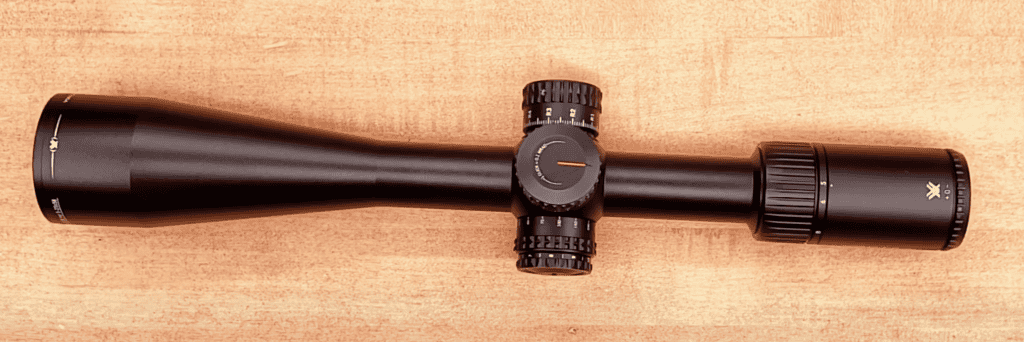
Where Vortex’s Lineup Gets Serious
The Viper PST Gen II represents the point in Vortex’s product range where they stop compromising on the features precision shooters actually need. Below this tier, you’re making trade-offs—capped turrets on the Diamondback, second focal plane limitations on budget models, less glass quality overall. The PST Gen II gives you exposed tactical turrets with their RZR zero stop system, first focal plane MRAD reticles that stay calibrated at any magnification, and glass that holds clarity well into twilight. I mounted this on my Bergara B-14 HMR in .308 Winchester specifically because I wanted to test it the way most shooters would use it: dialing for distance on a precision rifle that demands repeatable tracking.
The EBR-7C reticle is Vortex’s practical answer to long-range shooting. Christmas tree design below the center crosshair, with windage holds spreading wider as you go down—exactly what you need when you’re holding for wind at distance or making quick corrections without touching turrets. It’s an MRAD reticle matched to 0.1 MRAD clicks, so your math stays simple. At 15x magnification during load development, the reticle was fine enough for precise aiming without obscuring my 100-yard targets. Crank it to 25x and you’ve got the resolution to call shots on steel at 600 yards, though I found myself mostly living between 12x and 18x for practical shooting.
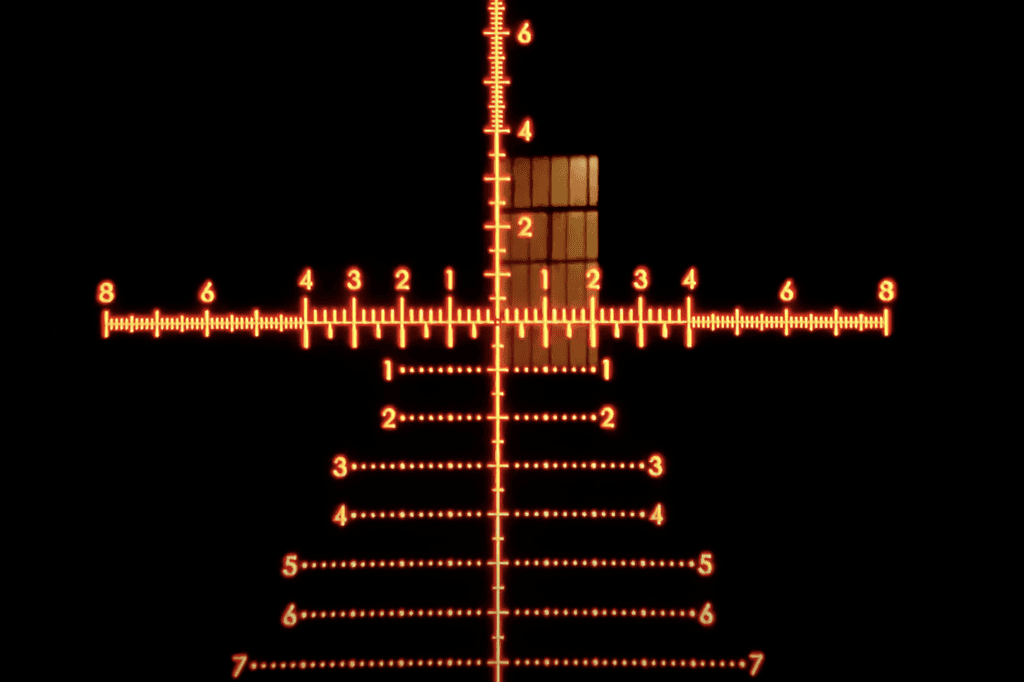
Glass Quality Against the Tiers
The optical performance separates the Viper line from everything below it in Vortex’s hierarchy. Edge-to-edge clarity stays sharp across most of the field of view, with only the outer 10 percent showing any real softness. That’s typical for scopes in this class and doesn’t hurt performance where it matters—the center two-thirds where you’re actually aiming. Low-light performance during evening range sessions showed the 50mm objective earning its keep. I was still getting usable images at 18x magnification fifteen minutes past sunset, well after I’d normally pack up with a smaller objective.
Color rendition was neutral without the warm cast I’ve seen in some Philippine-made optics. Not quite the contrast pop you get from premium Japanese glass in the Razor line, but honest color that doesn’t lie to you about what you’re looking at. The illumination has enough brightness settings to work from full daylight down to near-dark conditions, and the daylight-bright settings actually earn that description.
Turrets That Track
The RZR zero stop system is where the Gen II earns the upgrade designation from the original PST. You set your zero, lock it in with the provided tool, and you’ve got a hard stop that won’t let you dial below zero. The turrets themselves have that positive click you want—not mushy, not loose, just distinct feedback on every 0.1 MRAD adjustment. I ran a tracking test dialing up 10 MRAD, then back to zero, then 10 MRAD right, back to zero. Point of impact matched the dial exactly. That’s what you pay for in the Viper tier—mechanical reliability that doesn’t show up in budget scopes until they’ve been beaten around for a season.
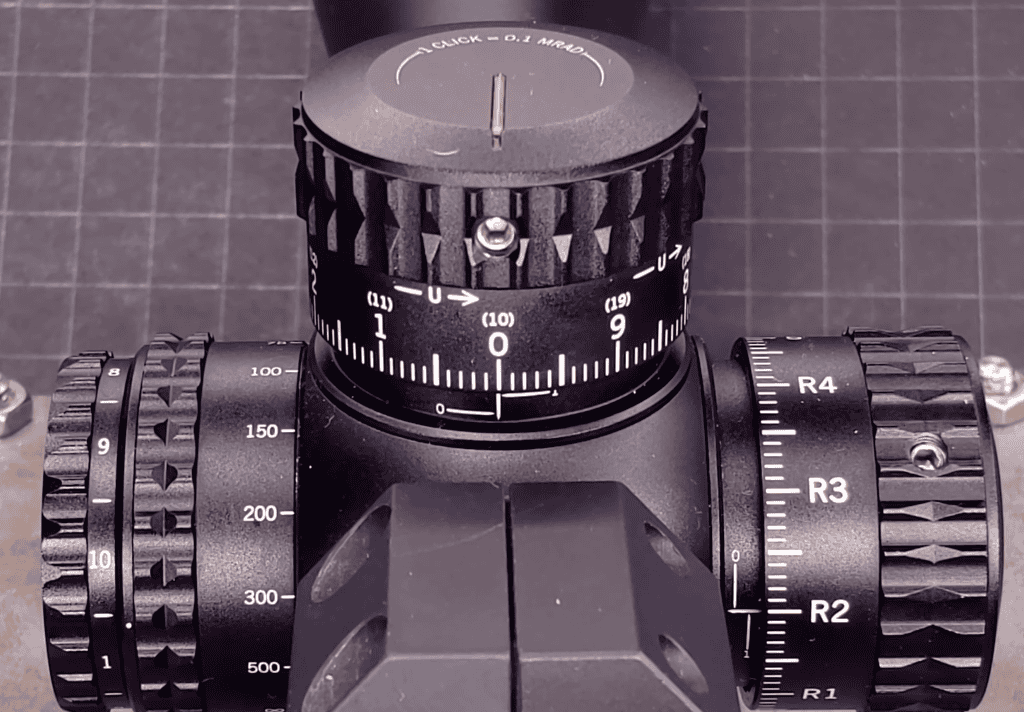
The 20 MRAD of elevation travel is adequate for most applications with this magnification range, though some extreme long-range shooters might want more. Paired with a 20 MOA rail on my Bergara, I had plenty of room to reach past 800 yards with .308 Winchester before running out of adjustment. The windage gets 10 MRAD, which is tight if you’re shooting in serious wind, but manageable if you use your reticle holds for wind calls.
What You’re Actually Paying For
At 31.2 ounces and nearly 16 inches long, this isn’t a lightweight mountain rifle scope. It’s built for precision applications where weight matters less than capability. The 3.4 inches of eye relief is workable but not generous—you need to be consistent with your cheek weld and head position. I didn’t have issues with my Bergara’s adjustable comb, but on a rifle with a fixed stock, you’d want to carefully consider scope positioning during mounting.
The Viper PST Gen II sits in Vortex’s mid-tier premium position, and that positioning makes sense. It delivers the features you need for serious shooting—FFP reticles, reliable turrets, good glass—without crossing into Razor pricing. This is the scope you buy when you’ve outgrown hunting scopes with capped turrets but don’t want to drop premium money on a Razor. It’s also available in different magnification ranges within the PST line, though the 5-25x I tested covers the span most tactical and precision shooters actually use.
Field Test Data
| Test Parameter | Result |
|---|---|
| 100-Yard Group (5 shots, prone) | 0.68 MOA average across 4 groups |
| Turret Tracking Test (10 MRAD box) | Perfect return to zero, POI matched dial |
| Low-Light Usability (18x magnification) | Clear sight picture 15 minutes post-sunset |
| Zero Retention (50 rounds) | No shift after 50-round session |
| Reticle Visibility (15x, 100 yards) | Precise aiming point without target obstruction |
Tested with: Bergara B-14 HMR .308 Winchester | Federal Gold Medal Match 168gr Sierra MatchKing
Pros and Cons
PROS
|
CONS
|
Performance Ratings
Learn more about how I test and rate scopes.
The Viper PST Gen II 5-25×50 sits exactly where it should in Vortex’s lineup—above the compromise tier, below the premium pricing. It’s the scope I’d grab first for PRS matches, precision rifle work, or western hunting where dialing for distance matters more than saving three ounces.
2. Vortex Razor HD LHT 4.5-22×50 – Best Premium Lightweight
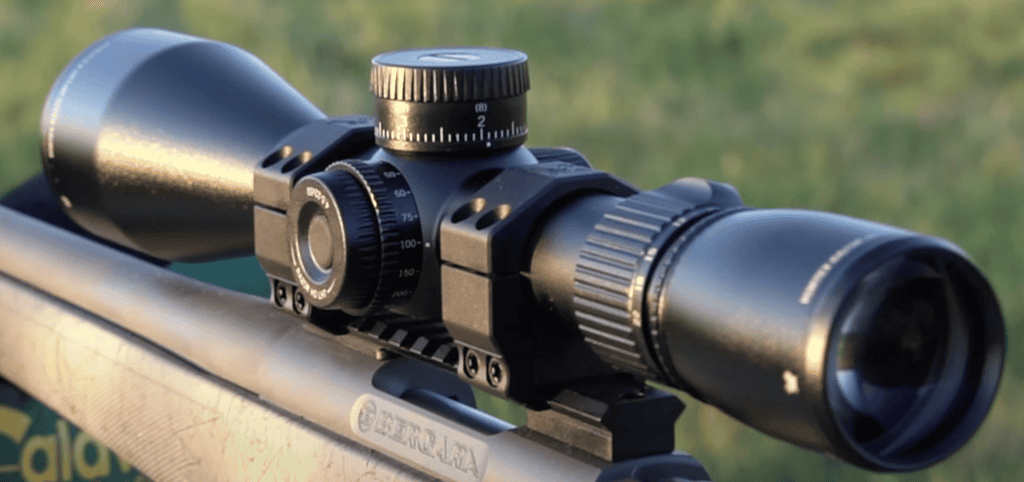
Premium Glass in a Mountain Rifle Package
At 21.7 ounces, the Razor HD LHT weighs nearly ten ounces less than the Viper PST Gen II while delivering Razor-tier optical performance. That weight savings matters when you’re five miles into the backcountry with a rifle on your shoulder. Vortex built the LHT (Light Hunter) specifically for mountain hunters who need premium glass without the bulk of tactical scopes, and they accomplished that through careful material selection and design rather than cutting features. I tested this on the same Bergara B-14 HMR I used for the PST, which isn’t the LHT’s ideal platform—this scope belongs on a lighter hunting rifle—but the pairing let me directly compare optical quality and handling.
The XLR-2 reticle differs from the EBR-7C on the Viper PST. It’s cleaner, less busy, designed for hunters who want holdover capability without the full Christmas tree that tactical shooters prefer. The floating center dot works well for precise shot placement, and the reticle has enough hash marks below center for ranging and holdovers out to reasonable hunting distances. Being first focal plane, it scales with magnification, though at 4.5x the reticle gets fine—usable, but you need good light and a steady hold to pick up the center dot quickly.
Where Razor Glass Shows Its Worth
The optical difference between Razor and Viper becomes obvious in marginal light. Side-by-side at last light, the Razor LHT held usable image clarity about five minutes longer than the Viper PST at the same magnification. Not a massive gap, but enough to matter during those critical dawn and dusk periods when big game moves. Edge-to-edge sharpness was excellent—better than the PST, with less distortion at the periphery. Color rendition had more contrast and saturation, making it easier to pick out animals against similar-colored backgrounds. This is Japanese LOW factory glass, the same manufacturing that builds premium Nightforce optics, and it shows.
The 4-inch eye relief is the most generous in this test and makes the scope significantly more forgiving on head position. That matters on a hunting rifle where you might be shooting from awkward positions or under time pressure. The eyebox itself felt more forgiving than the PST—I could shift my head position a bit and still maintain a full sight picture without vignetting.
Turrets Built for Hunters, Not Competition
The RevStop zero system is Vortex’s hunting-focused alternative to the RZR zero stop on the PST. You get an exposed elevation turret for dialing longer shots, but the windage stays capped to prevent accidental adjustment in the field. The elevation turret has clear, positive clicks with good tactile feedback. I ran the same tracking test I did with the PST—dialing up, back to zero, confirming return—and it performed flawlessly. The RevStop prevents you from dialing below your zero without removing the turret cap and adjusting shims, which is exactly what a hunting scope needs.
The 22.4 MRAD of elevation adjustment is slightly more than the PST’s 20 MRAD, giving you a bit more room for extreme-distance shooting or different ballistic setups. With standard rings and no canted base, you’ve got enough adjustment to handle any reasonable hunting scenario and extend into long-range precision work if that’s your goal.
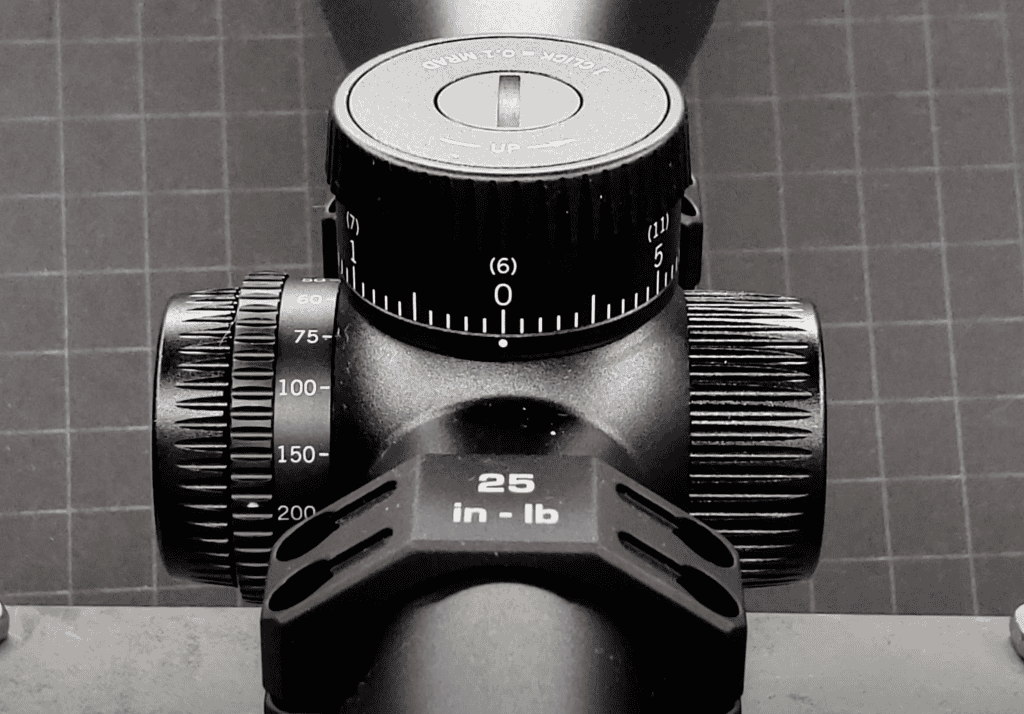
The Weight Savings Calculation
Cutting 9.5 ounces from the Viper PST while maintaining premium optics doesn’t come cheap—the LHT sits at the upper end of Vortex’s pricing. You’re paying for Japanese manufacturing, premium glass elements, and the engineering that lets them shed weight without sacrificing durability. The scope is also 2.5 inches shorter than the PST, which improves rifle balance and handling. On a lightweight mountain rifle, that combination of reduced weight and length transforms how the rifle carries and points.
The Razor LHT is the scope you choose when optical performance and weight both matter critically. If you’re hunting whitetail from a box blind where you’ll hike 200 yards to your stand, the weight savings won’t justify the cost over a Viper PST. But if you’re sheep hunting at elevation or covering serious mountain miles with a rifle on your back, those 9.5 ounces add up over the course of a day, and the premium glass gives you confidence in low light when shots present themselves.
Field Test Data
| Test Parameter | Result |
|---|---|
| 100-Yard Group (5 shots, prone) | 0.71 MOA average across 4 groups |
| Turret Tracking Test (10 MRAD box) | Perfect return to zero via RevStop system |
| Low-Light Comparison (18x) | Maintained usable clarity 5 minutes longer than Viper PST |
| Eye Relief Forgiveness | Full sight picture maintained across 4″ of movement |
| Reticle Visibility (12x, 100 yards) | Clean center dot with good hash mark definition |
Tested with: Bergara B-14 HMR .308 Winchester | Federal Gold Medal Match 168gr Sierra MatchKing
Pros and Cons
PROS
|
CONS
|
Performance Ratings
Learn more about how I test and rate scopes.
The Razor HD LHT delivers on its promise—premium optical performance without the weight penalty. It’s the scope for hunters who cover serious distance on foot and need glass quality that performs when shooting opportunities appear in marginal light.
3. Vortex Venom 3-15×44 – Best Mid-Range Value
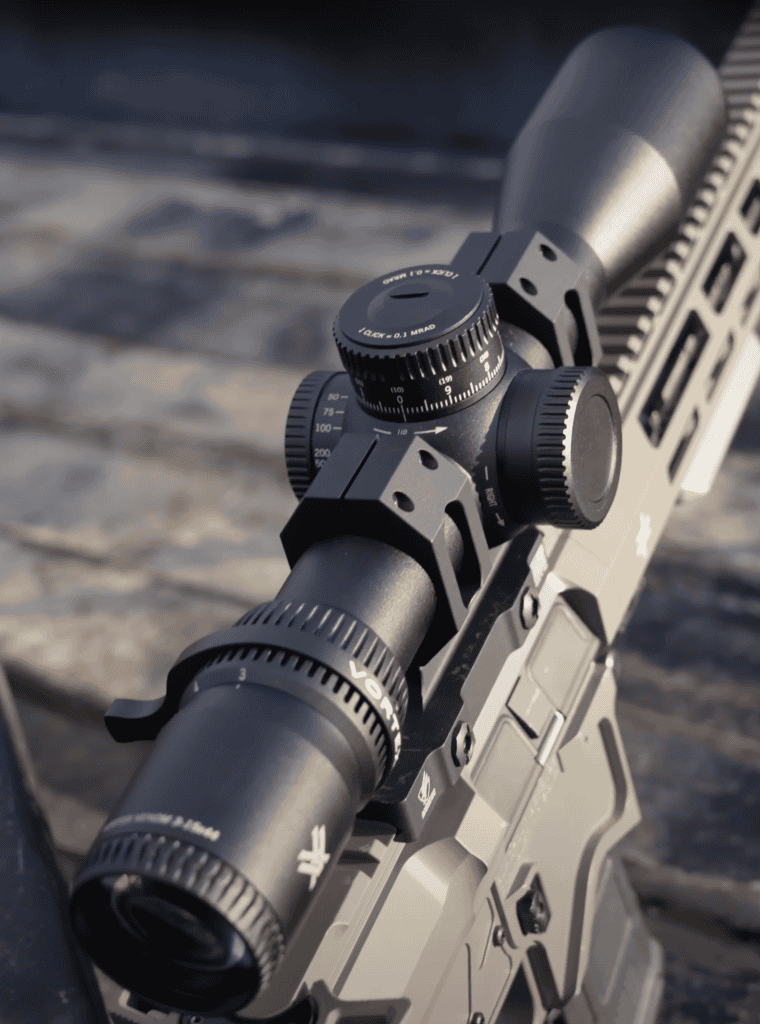
The 34mm Tube Value Proposition
The Venom line sits in an interesting position within Vortex’s hierarchy—below the Viper PST in overall refinement but offering some specs that punch above its tier. The 34mm main tube is the standout feature here, giving this scope 40 MRAD of elevation adjustment and 22 MRAD of windage. That’s more adjustment range than you get from the Viper PST or even the Razor LHT, both of which use 30mm tubes. Vortex positioned the Venom as a mid-range option that delivers FFP reticles and serious adjustment capability without Viper pricing, and on paper, that positioning makes sense. I tested this alongside the PST to see where the cost savings show up and whether the extra adjustment range matters for real-world shooting.
The same EBR-7C reticle that works well in the Viper PST appears here, which creates consistency if you’re running multiple Vortex scopes. At 15x maximum magnification, the reticle is appropriately sized for the scope’s intended range—detailed enough for precise holds without becoming cluttered. The first focal plane design means it scales with magnification, staying calibrated whether you’re at 3x working close or dialed to 15x for longer shots. The 3-15x magnification range makes this more of a general-purpose scope than the higher-magnification PST or LHT, suitable for hunters who want one optic that covers timber shooting and open country work.
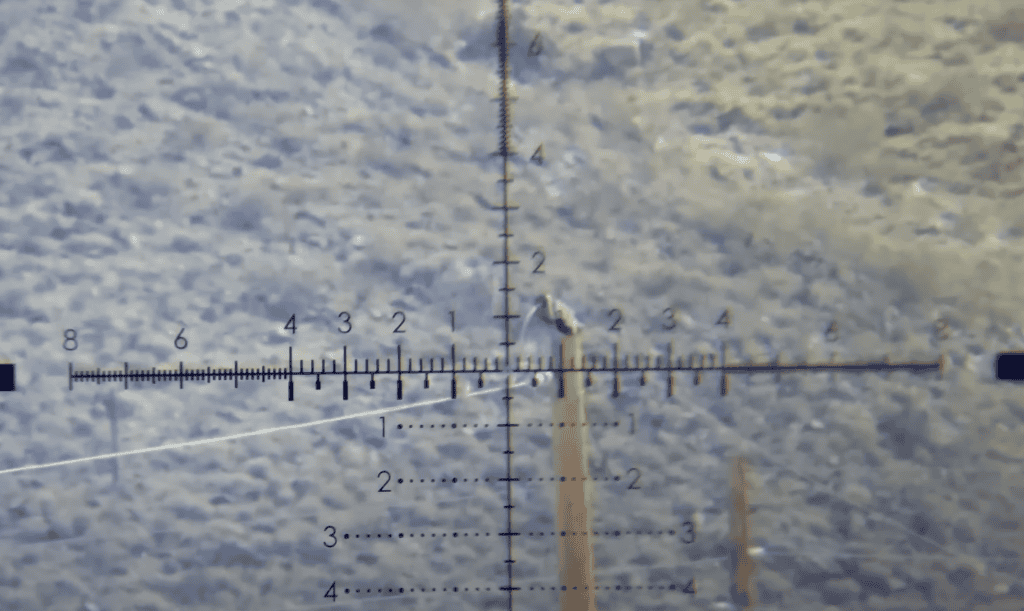
Glass Quality in the Mid-Tier
The Venom’s optical performance sits noticeably below the Viper PST, which itself sits below the Razor. That’s expected given the pricing—this is Chinese-manufactured glass rather than the Philippine assembly of the PST or Japanese manufacturing of the Razor. Edge clarity showed more softness than the PST, with the outer 15-20 percent of the image losing sharpness. Center resolution was acceptable for the price point but lacked the contrast and color saturation I saw in higher-tier Vortex scopes. In good light at 100 yards, these differences don’t hurt practical shooting. In marginal light or at the scope’s maximum magnification, the gap becomes more obvious.
Low-light performance with the 44mm objective was adequate but not impressive. At 12x magnification during late evening shooting, I could still make out targets reasonably well, though the image dimmed noticeably compared to the 50mm objectives on the PST and Razor. The smaller objective is part of how Vortex keeps the weight manageable at 28.8 ounces and the overall length at 13.4 inches. For hunters who prioritize handling over maximum light gathering, that trade-off works.
Massive Adjustment Range
The 40 MRAD elevation adjustment is the Venom’s calling card—that 34mm tube provides internal room for significantly more travel than 30mm tubes can manage. That extra adjustment opens up options: you can zero at 100 yards and still have plenty of elevation left for extreme distances, or you can skip the canted base entirely and let the scope’s internal adjustment handle your ballistic needs. The 22 MRAD of windage is similarly generous, giving you more room for wind corrections or zeroing rifles with slightly canted actions.
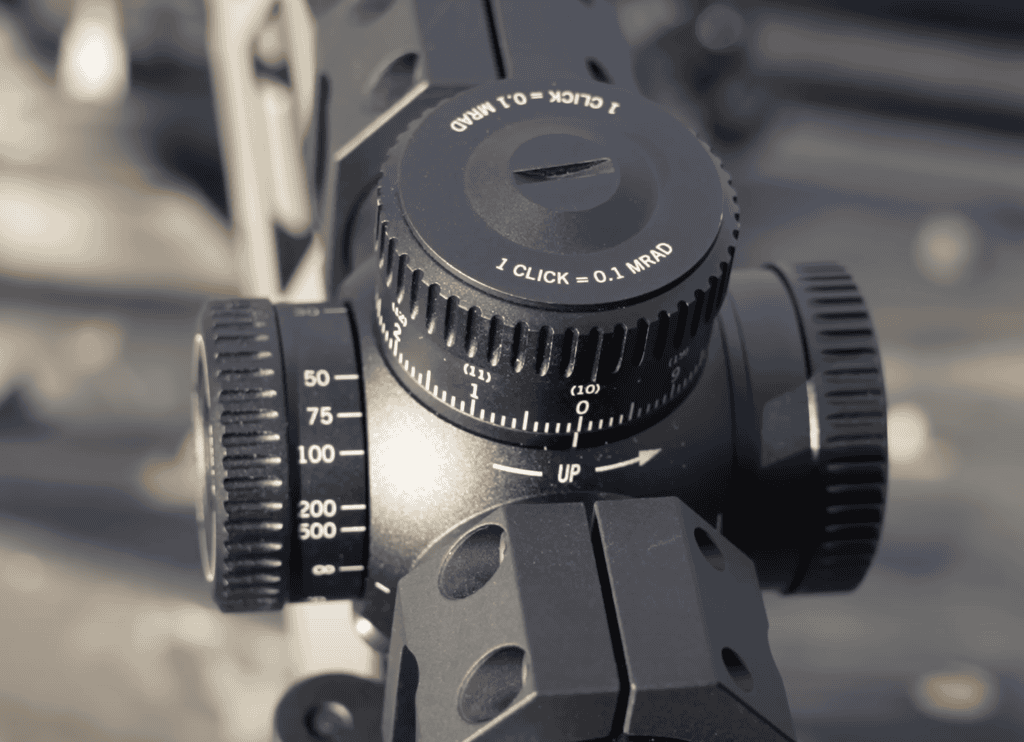
The exposed elevation turret with RevStop zero system functions like the Razor LHT’s setup—you can dial for distance but you won’t accidentally knock yourself off zero. Turret clicks had decent tactile feedback, though they felt slightly less crisp than the PST’s RZR system. I tracked the turrets through 12 MRAD of elevation adjustment and back to zero multiple times without detecting any shift in point of impact. For a mid-tier scope, that’s solid mechanical performance.
Where the Cost Savings Appear
The Venom delivers first focal plane reticles, and massive adjustment range at a price point that undercuts the Viper PST. Those savings show up in optical performance and build refinement. The glass doesn’t match Viper quality, the focus ring turns with more resistance than I’d prefer, and the overall fit and finish feels a step below the PST. Nothing felt cheap or fragile, but the tactile experience reminded me this scope occupies the middle ground between budget and premium.
Eye relief at 3.7 inches sits between the tight 3.4 inches of the PST and the generous 4 inches of the Razor. Workable but not forgiving—you need consistent cheek weld and scope positioning. The field of view is notably wide at 3x (42.4 feet at 100 yards), making this scope well-suited for scanning at low power in timber or transitioning between targets.
The Venom makes sense for shooters who want FFP capability and don’t need premium glass—people shooting in good light where optical performance matters less than adjustment range and reticle features. It also works for someone building a precision rifle on a budget who plans to upgrade later. That 34mm tube and big adjustment range mean you won’t outgrow the scope’s mechanical capabilities even if the glass doesn’t match higher-tier options.
Field Test Data
| Test Parameter | Result |
|---|---|
| 100-Yard Group (5 shots, prone) | 0.89 MOA average across 4 groups |
| Turret Tracking Test (12 MRAD box) | Returned to zero consistently; POI matched dial adjustments |
| Adjustment Range Utilization | Used 20 MRAD elevation without canted base, still had travel remaining |
| Low-Light Performance (12x) | Adequate image clarity at dusk; dimmer than 50mm scopes tested |
| Wide-Angle Scanning (3x) | 42.4′ FOV effective for close-range target acquisition |
Tested with: Bergara B-14 HMR .308 Winchester | Federal Gold Medal Match 168gr Sierra MatchKing
Pros and Cons
PROS
|
CONS
|
Performance Ratings
Learn more about how I test and rate scopes.
The Venom 3-15×44 makes the most sense for shooters who prioritize adjustment range and FFP capability over optical refinement. It’s not trying to compete with Viper glass quality, but it delivers mechanical features and usable performance at a price point that makes FFP reticles accessible without premium spend.
4. Vortex Strike Eagle 1-8×24 – Best for AR Platform
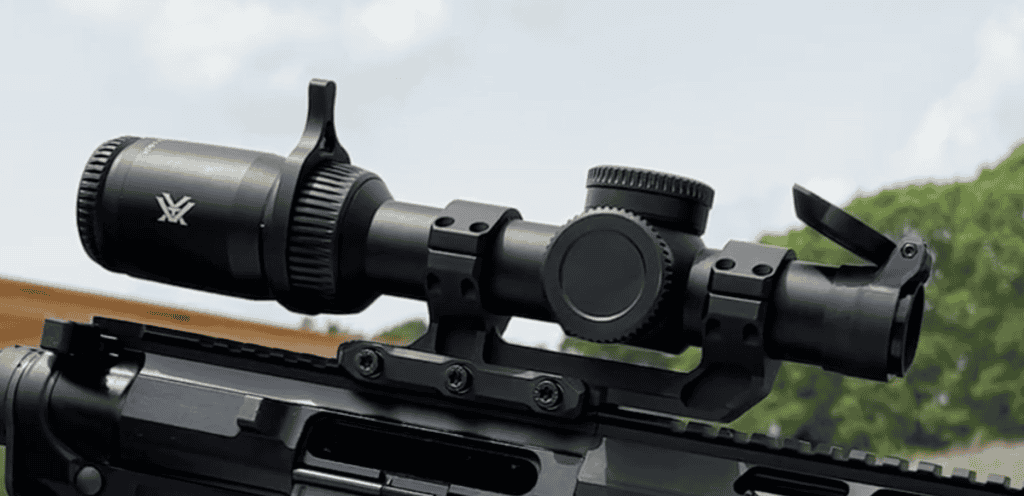
Built Specifically for the AR Platform
The Strike Eagle sits between the Viper and Venom in Vortex’s lineup, but it occupies a different niche than either—this is their dedicated LPVO (low power variable optic) designed specifically for modern sporting rifles. True 1x magnification at the low end means you can shoot with both eyes open for close-quarters work, while the 8x top end gives you enough magnification for practical AR-15 distances. I tested this mounted on a basic AR-15 in 5.56 NATO because that’s exactly the platform this scope was designed for. At 17.4 ounces and 10 inches long, it doesn’t overwhelm a carbine-length rifle the way precision scopes do.
The AR-BDC3 reticle is calibrated for 5.56/.223 trajectories, with a 1 MOA center dot surrounded by a 16.625 MOA broken circle. That circle design serves a specific purpose—it helps your eye find center fast when you’re transitioning between targets or acquiring new ones. The BDC marks below center provide holdover references out to 650 yards, though most AR shooters won’t push past 300-400 yards in practical use. Being second focal plane, the reticle stays the same visual size regardless of magnification. At 1x, the center dot and circle are appropriately sized for quick shooting. At 8x, the reticle has enough detail for precision aiming without cluttering the sight picture.
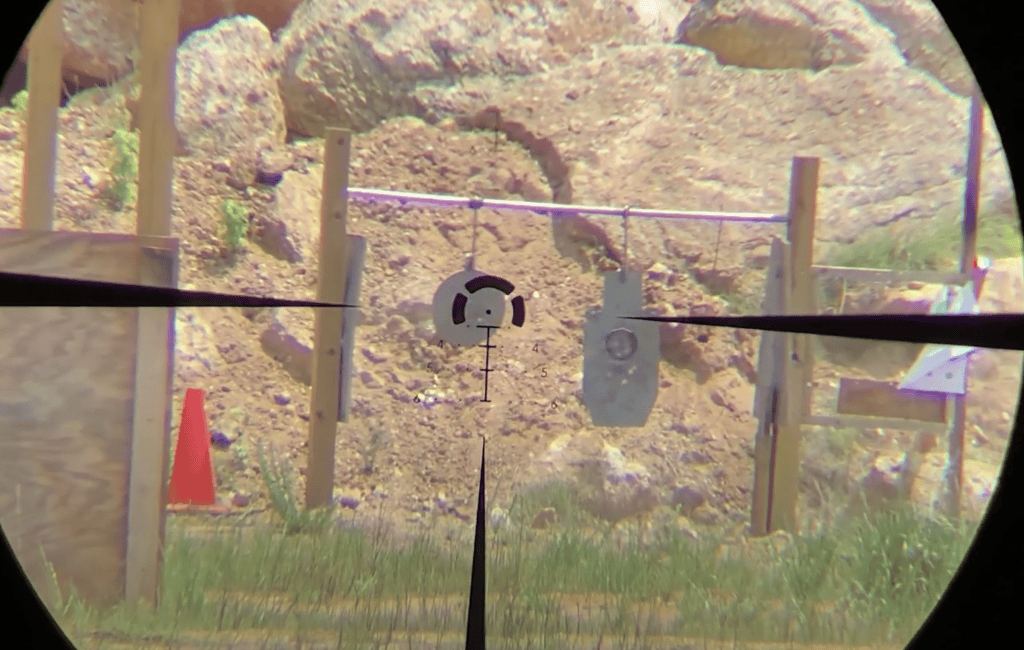
The 1x Performance That Matters
True 1x magnification isn’t a given on all LPVOs—some scopes marketed as 1-6x or 1-8x actually run closer to 1.2x or 1.3x at their lowest setting, which creates a slight fisheye effect that makes both-eyes-open shooting awkward. The Strike Eagle delivers actual 1x. I confirmed this by comparing the scope’s view to my naked eye view at 25 yards, and they matched. That matters for close-range shooting where you need situational awareness and fast target transitions. The 109-foot field of view at 1x is massive—wider than any other scope in this test—giving you the peripheral vision you need for close work.
The glass quality sits where you’d expect for the Strike Eagle’s position in Vortex’s hierarchy—noticeably better than the Diamondback and Crossfire, not as refined as the Viper or Razor. Edge clarity was acceptable, with the outer 15 percent showing softness similar to what I saw in the Venom. The 24mm objective is small by precision rifle standards but appropriate for an LPVO where weight and compactness matter more than maximum light gathering. At 8x magnification in good light, I could easily see my impacts on steel at 200 yards.
Practical Illumination and Controls
The illumination dial sits on the left side of the eyepiece with enough brightness settings to cover dawn to full daylight. At the highest settings, the center dot was visible against bright targets in Texas midday sun. Lower settings worked well for indoor range shooting or low-light conditions. The included throw lever threads into the magnification ring, letting you change power settings quickly without taking your hand off the grip. That’s useful when you’re moving between close and distance targets.
The capped turrets reflect this scope’s intended use—you’re not dialing for distance on an AR, you’re using the BDC holdovers. The 1/2 MOA clicks are coarser than the 1/4 MOA standard on precision scopes, but adequate for the adjustment ranges most AR shooters need. With 140 MOA of both elevation and windage adjustment, you’ve got more than enough room to zero the rifle and handle any reasonable shooting scenario. Eye relief at 3.5 inches worked well with standard AR buffer tube positions and didn’t require any special mounting considerations.
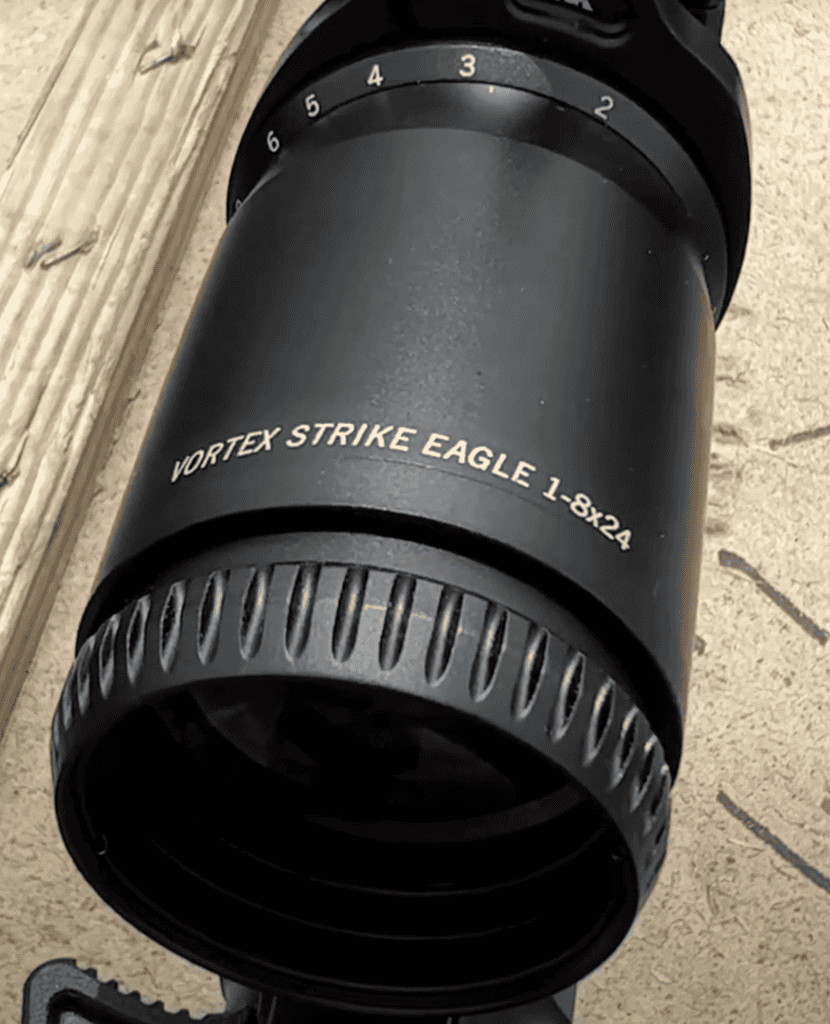
Where the Strike Eagle Fits
This scope makes sense for AR-15 owners who want a single optic that handles both close-range work and extends their effective range past what a red dot can manage. It’s also available in other magnification ranges within the Strike Eagle line, though the 1-8x I tested covers the sweet spot for general-purpose AR use. The Strike Eagle sits above the Diamondback in optical quality but below the Viper PST in refinement and features—you don’t get first focal plane reticles or premium glass, but you get LPVO capability at a price point that makes sense for most AR builds.
The scope’s limitations are the same ones inherent to all LPVOs in this price range. The eyebox at 8x magnification is less forgiving than precision scopes, requiring more careful head positioning. The BDC reticle works well for 5.56 loads but requires some mental adjustment if you’re shooting other calibers through the same AR platform. And the fixed parallax at 100 yards means you’ll see some parallax error at close distances or beyond 200 yards, though it’s not severe enough to hurt practical accuracy at LPVO ranges.
Field Test Data
| Test Parameter | Result |
|---|---|
| 50-Yard Group at 1x (offhand, 5 shots) | 3.2″ group using center dot for rapid fire |
| 100-Yard Group at 8x (bench, 5 shots) | 1.4 MOA average across 4 groups |
| True 1x Verification | Matched naked eye view—confirmed genuine 1x magnification |
| Illumination Daylight Visibility | Center dot visible at highest setting in bright Texas sun |
| Transition Speed (1x to 8x) | Throw lever enabled fast magnification changes without grip release |
Tested with: AR-15 5.56 NATO | Federal American Eagle 55gr FMJ
Pros and Cons
PROS
|
CONS
|
Performance Ratings
Learn more about how I test and rate scopes.
The Strike Eagle 1-8×24 delivers exactly what AR-15 shooters need—true 1x for close work and enough magnification to extend effective range, all in a package that doesn’t turn a carbine into a precision rifle.
You can also check my full review on Vortex Strike Eagle 1-8×24.
5. Vortex Diamondback 4-12×40 – Best Budget Hunting Scope
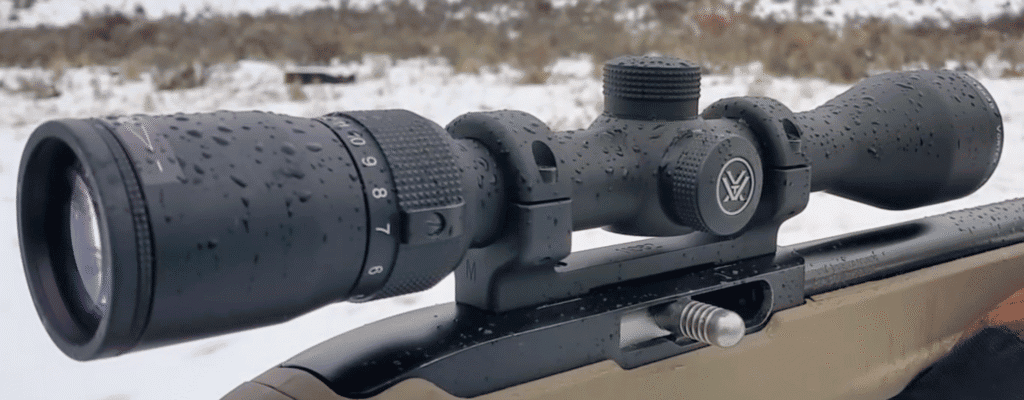
Budget Hunting Without Tactical Pretense
The Diamondback represents Vortex’s budget hunting tier—below the Strike Eagle and well below the Venom and Viper lines. At 14.2 ounces, this is the lightest scope in the test, which matters when you’re carrying a rifle through timber or up a mountain. The 4-12x magnification range covers what most hunters actually use: 4-6x for scanning and close shots in heavy cover, 8-10x for most shooting scenarios, and the full 12x when you need it for longer shots in open country. I tested this mounted on a Ruger American in .243 Winchester—a sensible pairing of budget rifle and budget scope that represents how most hunters will actually use the Diamondback.
The Dead-Hold BDC reticle is simpler than the Christmas tree tactical reticles on higher-tier Vortex scopes. It’s essentially a duplex crosshair with dots and short hash marks below center for bullet drop compensation. The design is straightforward—center crosshair for your zero distance, then reference marks at intervals for longer shots. Being second focal plane, the BDC subtensions are only accurate at 12x magnification, which is standard for hunting scopes in this price range. Most hunters zero at 100 or 200 yards and use the holdover marks for everything beyond that. It’s not precise enough for competition but adequate for hunting-sized vital zones.
Philippine Glass on a Budget
The Diamondback is manufactured in the Philippines, which typically produces better glass than Chinese manufacturing at the same price point. Optical clarity was a step above the Crossfire II but noticeably below the Venom and everything above it. Edge sharpness dropped off in the outer 20 percent of the image, and at 12x magnification I could see chromatic aberration (purple fringing) around high-contrast edges. In the center of the field where you’re aiming, resolution was acceptable for hunting. Colors were somewhat muted compared to higher-tier scopes but not inaccurate.
Low-light performance with the 40mm objective was adequate for normal hunting hours but nothing special. At 10x magnification about twenty minutes before sunset, I could still make out my 100-yard target clearly enough to shoot. Push it to full dark and you’ll struggle, but most hunting doesn’t happen in those conditions. The scope lacks illumination, which is fine—most hunters in this price bracket don’t need or use it anyway.
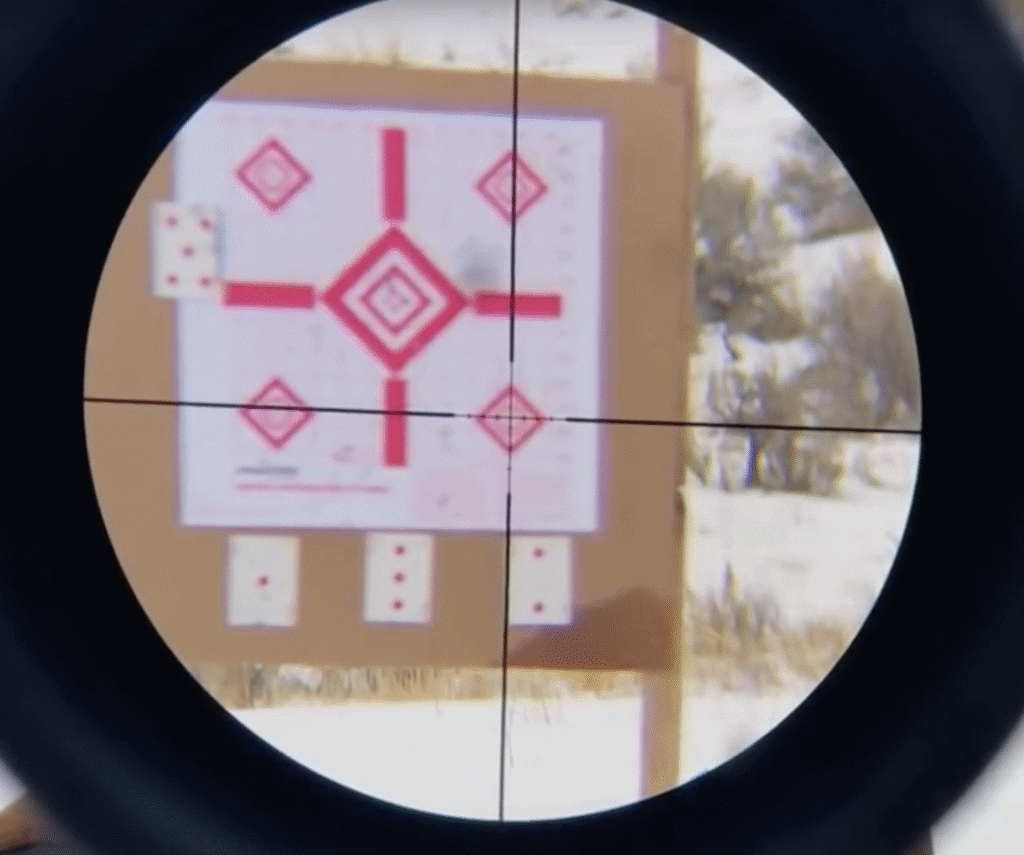
Capped Turrets for Hunting Sense
The capped turrets tell you this scope’s purpose—you’re not dialing for distance, you’re setting your zero and using holdovers. The turrets have 1/4 MOA clicks that felt adequately positive during zeroing. They’re resettable to zero after sight-in, which is useful if you want to track your adjustments. The 60 MOA of total elevation and windage adjustment is sufficient for normal hunting applications. With standard medium rings, I had no problem zeroing at 100 yards and still had adjustment left if I needed to make significant changes.
Eye relief at 3.1 inches is the tightest in this test. You need to be careful about scope positioning during mounting, and shooters with longer necks or different stock dimensions might struggle to get comfortable. On a rifle with adjustable comb or proper length of pull, it’s manageable. On a fixed-stock rifle where you can’t adjust fit, that tight eye relief could be a problem. The eyebox was less forgiving than higher-tier scopes—move your head slightly and you’ll see vignetting at the edges.
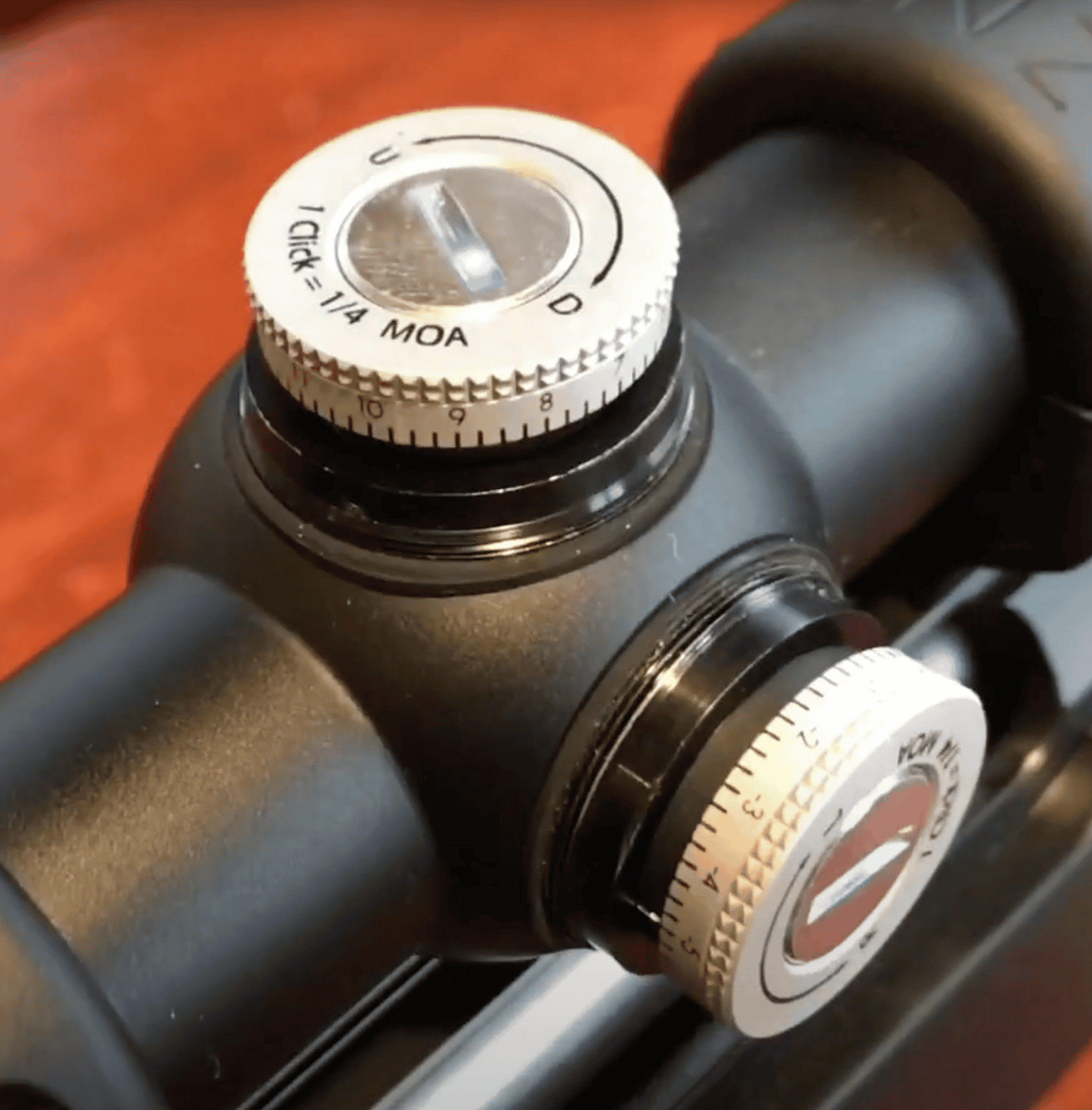
What Budget Actually Means
At 14.2 ounces and 12 inches long, the Diamondback won’t overbalance your rifle or punish you during long carries. The 1-inch tube is appropriate for a hunting scope that isn’t designed for dialing—you don’t need massive adjustment range when you’re holding over with BDC marks. The fixed 100-yard parallax works fine for hunting distances between 50 and 300 yards, which covers most scenarios. Beyond 300 yards you’ll start seeing parallax error, but most hunters shooting that distance have moved up to scopes with adjustable parallax.
Build quality felt solid without being refined. The focus ring had some resistance, the magnification ring turned smoothly, and nothing felt cheap or fragile. This isn’t the scope you handle and think “wow, nice,” but it’s not the scope that makes you worry about durability either. The matte finish will show scratches but that’s cosmetic. Vortex’s VIP Warranty backs everything up anyway—if something breaks, they fix it.
The Diamondback makes sense for hunters who need basic glass that holds zero and doesn’t break the budget. It’s available in other magnification ranges within the Diamondback line, though the 4-12x I tested is probably the most versatile for general hunting. If you’re putting together a hunting rifle on a budget and want something better than the absolute cheapest scopes but can’t justify Viper money, this is where you land.
Field Test Data
| Test Parameter | Result |
|---|---|
| 100-Yard Group (5 shots, bench) | 1.6 MOA average across 4 groups |
| Zero Retention | Maintained zero through 40-round session |
| BDC Holdover Test (200 yards, 12x) | First hash mark provided appropriate hold for .243 Winchester |
| Edge Clarity Assessment | Outer 20% showed softness; center remained sharp |
| Low-Light Performance (10x) | Usable image 20 minutes before sunset |
Tested with: Ruger American .243 Winchester | Hornady American Whitetail 100gr Interlock
Pros and Cons
PROS
|
CONS
|
Performance Ratings
Learn more about how I test and rate scopes.
The Diamondback 4-12×40 delivers what budget hunters actually need—basic optical clarity, BDC holdovers, and lightweight construction—without pretending to compete with scopes costing three times as much.
6. Vortex Crossfire II 3-9×40 – Best Entry Level

The Bottom of Vortex’s Lineup
The Crossfire II is where most shooters start with Vortex—entry-level pricing with the same VIP Warranty that backs their premium scopes. This is Chinese-manufactured glass at the lowest tier of Vortex’s seven product lines, and that shows in the optical performance. The classic 3-9×40 configuration has been a hunting standard for decades because it covers the magnification range most hunters actually need. I tested this mounted on a basic Savage Axis in .308 Winchester, which is exactly the kind of rifle pairing most Crossfire II buyers will make—budget scope on budget rifle for someone getting into hunting or putting together an inexpensive backup.
The same Dead-Hold BDC reticle from the Diamondback appears here, providing holdover reference marks below the center crosshair. At 9x magnification, the reticle was appropriately sized—not too thick, not too fine. The dots and hash marks were visible enough to use for holdovers, though the second focal plane design means they’re only calibrated at maximum magnification. For most hunting scenarios where you’re shooting at game-sized targets inside 300 yards, the BDC provides adequate reference without requiring dialing.
Entry-Level Glass Reality
The optical performance is noticeably worse than the Diamondback, which itself sits well below the Venom and higher tiers. Edge clarity was soft across the outer 25-30 percent of the image, and chromatic aberration appeared prominently on high-contrast edges even at moderate magnifications. Color rendition had a slight cool cast, and overall contrast was lower than any other scope in this test. In bright daylight at 100 yards, the Crossfire provided enough clarity to aim precisely. In marginal light or at longer distances, the optical limitations became obvious.
The 40mm objective gathered less light than the 50mm scopes but matched the Diamondback. At 7x magnification during evening shooting, the image dimmed noticeably earlier than scopes from higher Vortex tiers. This isn’t surprising—you’re paying entry-level money for entry-level glass. The scope will get you through a hunting season, but don’t expect the low-light performance of scopes costing several times more.
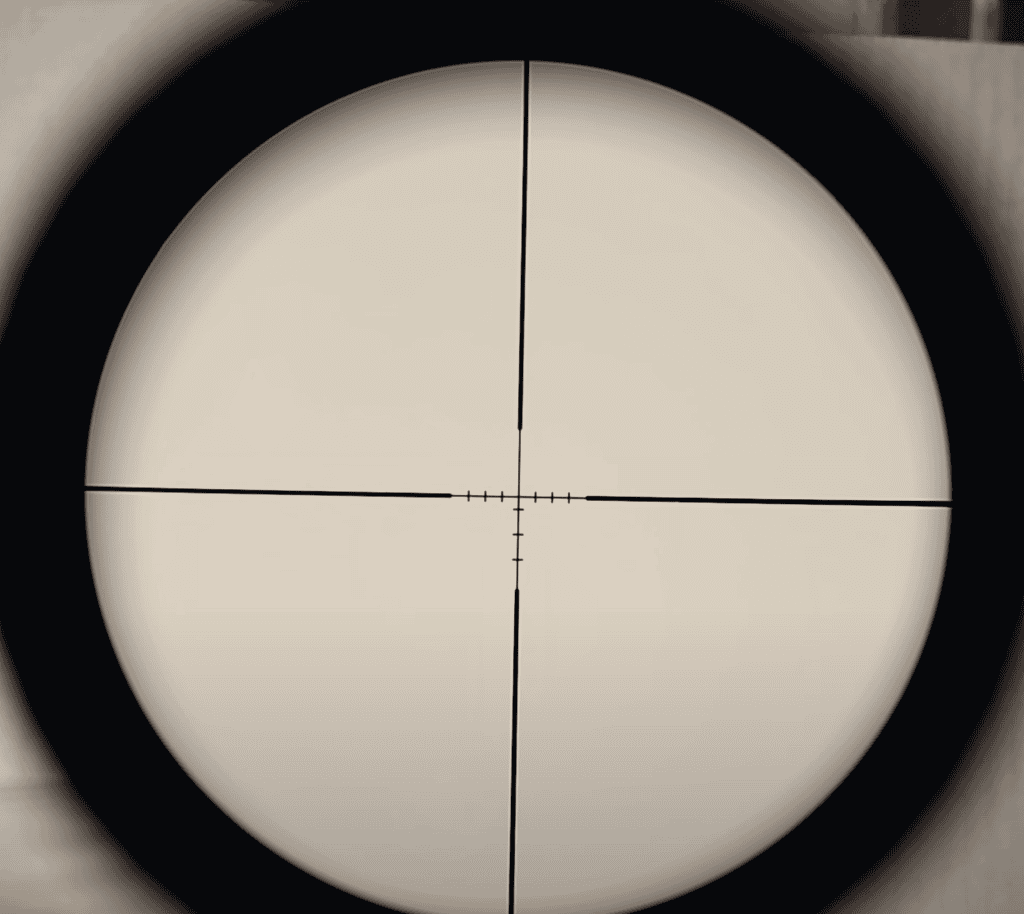
Generous Eye Relief
The 3.8 inches of eye relief is the most generous among the hunting scopes in this test, exceeded only by the Razor LHT’s 4 inches. That extra eye relief matters on heavier-recoiling rifles or for shooters who prefer more distance between their eye and the scope. On my .308 test rifle, I had no issues with scope positioning or maintaining a comfortable sight picture. The eyebox was more forgiving than the Diamondback’s tight tolerance, though still not as generous as premium scopes.
The capped turrets have 1/4 MOA clicks that felt adequate—not as crisp as Viper-tier turrets but functional for zeroing. The 60 MOA of adjustment in both elevation and windage match the Diamondback’s. For most hunting applications with standard medium rings, 60 MOA is good enough.
What Entry-Level Actually Delivers
The 12.2-inch length is manageable on most rifles without creating balance issues. The 1-inch tube is standard for budget hunting scopes and provides adequate strength for normal use. Build quality felt competent without any premium touches—the magnification ring turned smoothly, the focus adjusted without slop, and nothing rattled or felt loose. The matte finish will show wear over time, but that’s cosmetic.
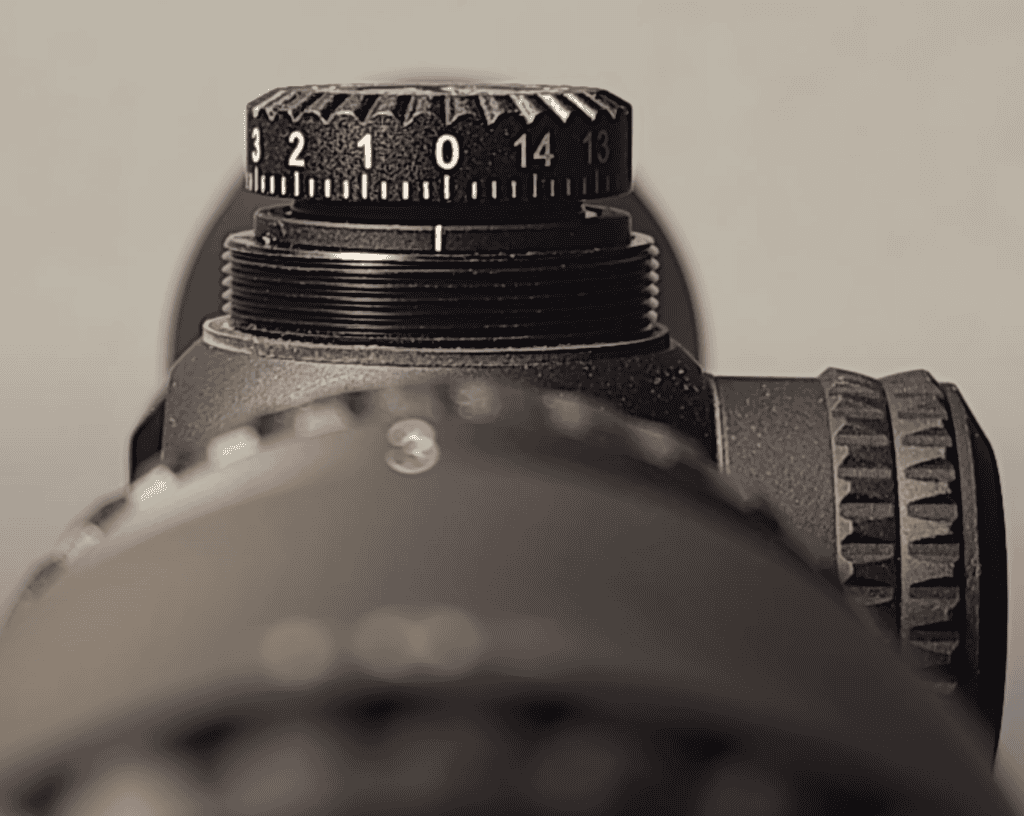
The Crossfire II’s biggest advantage is the VIP Warranty. For the cost of this scope, you’re getting insurance that if something breaks—whether from a fall, impact, or manufacturing defect—Vortex will fix or replace it. That warranty removes the risk from buying entry-level glass. If this scope fails after a year of hard use, you send it back and get another one. That peace of mind matters when you’re spending minimal money on optics.
This is the scope you buy when budget constraints are real and you need something that’ll hold zero and get you through deer season. It’s also available in other configurations within the Crossfire II line, though the 3-9×40 remains the most popular for general hunting. The Crossfire won’t impress anyone who’s looked through premium glass, but it’ll serve its purpose on a budget rifle for a shooter who’s more concerned with spending money on ammunition and range time than premium optics.
Field Test Data
| Test Parameter | Result |
|---|---|
| 100-Yard Group (5 shots, bench) | 1.9 MOA average across 4 groups |
| Zero Retention | Held zero across 50-round testing session |
| Optical Quality Comparison | Noticeable CA and edge softness; center adequate for hunting distances |
| Eye Relief Comfort | 3.8″ provided forgiving positioning on .308 rifle |
| Low-Light Limit (7x) | Image dimmed significantly earlier than premium scopes tested |
Tested with: Savage Axis .308 Winchester | Winchester Super-X 150gr Power-Point
Pros and Cons
PROS
|
CONS
|
Performance Ratings
Learn more about how I test and rate scopes.
The Crossfire II 3-9×40 is honest about what it delivers—entry-level optical performance with the same warranty protection as Vortex’s premium scopes. It’s the scope that gets you hunting while you save money for ammunition and range time.
7. Vortex Golden Eagle HD 15-60×52 – Best for Extreme Magnification

Competition-Specific Magnification
The Golden Eagle HD sits second in Vortex’s hierarchy below only the Razor line, but it occupies a completely different niche than any other scope in this test. Starting at 15x magnification—where most hunting and tactical scopes max out—and extending to 60x, this scope lives in F-Class and benchrest competition territory. That 15-60x range isn’t practical for field shooting or hunting. It’s designed for reading wind indicators at extreme distances, spotting bullet holes on paper at 600 yards, and making minute adjustments under controlled competition conditions. I tested this mounted on my Bergara B-14 HMR in .308 Winchester at a benchrest setup because that’s how competitors actually use this scope—locked into a rest, shooting at known distances on paper.
The ECR-1 (Enhanced Crosshair Reticle) is a simple, fine crosshair with MOA hash marks for ranging and holdover corrections. Being second focal plane, the reticle subtensions are accurate at 40x magnification according to Vortex’s specifications. The reticle’s fineness becomes obvious immediately—at 15x it’s already more delicate than tactical reticles on the Viper or Venom, and at 60x you’ve got the precision needed to aim at individual scoring rings on competition targets. The hash marks provide reference without cluttering the sight picture, which matters when you’re trying to read mirage or watch trace at extreme magnification.
HD Glass at High Magnification
The Golden Eagle uses high-density extra-low dispersion glass with an apochromatic lens system, which is optical engineering speak for glass that minimizes chromatic aberration and maintains color accuracy across the spectrum. At 60x magnification, any optical flaws get magnified dramatically, so the glass quality needs to be exceptional. Edge-to-edge sharpness was excellent—better than the Viper PST, nearly matching the Razor LHT. Color rendition was neutral and accurate, critical when you’re trying to distinguish scoring rings or read subtle environmental indicators. At 600 yards through 60x magnification, I could clearly see the individual .30 caliber bullet holes I was punching through paper.
The 52mm objective provides adequate light gathering for competition shooting, which typically happens in good daylight conditions. I wouldn’t want to use this scope for hunting at dawn or dusk—the extreme magnification and relatively modest objective size limit low-light performance compared to larger objectives on hunting scopes. But competitors aren’t shooting in marginal light, so the design makes sense for its intended application.
Ultra-Fine Click Adjustments
The 1/8 MOA click value is the finest adjustment increment in this test—four times finer than the 1/2 MOA clicks on the Strike Eagle and twice as fine as the standard 1/4 MOA clicks found on most scopes. That precision matters in competition where you’re making tiny corrections to center your groups. The turrets had excellent tactile feedback with distinct, positive clicks. At extreme magnification, even small adjustments translate to significant changes at the target, so precise click values prevent over-correction.
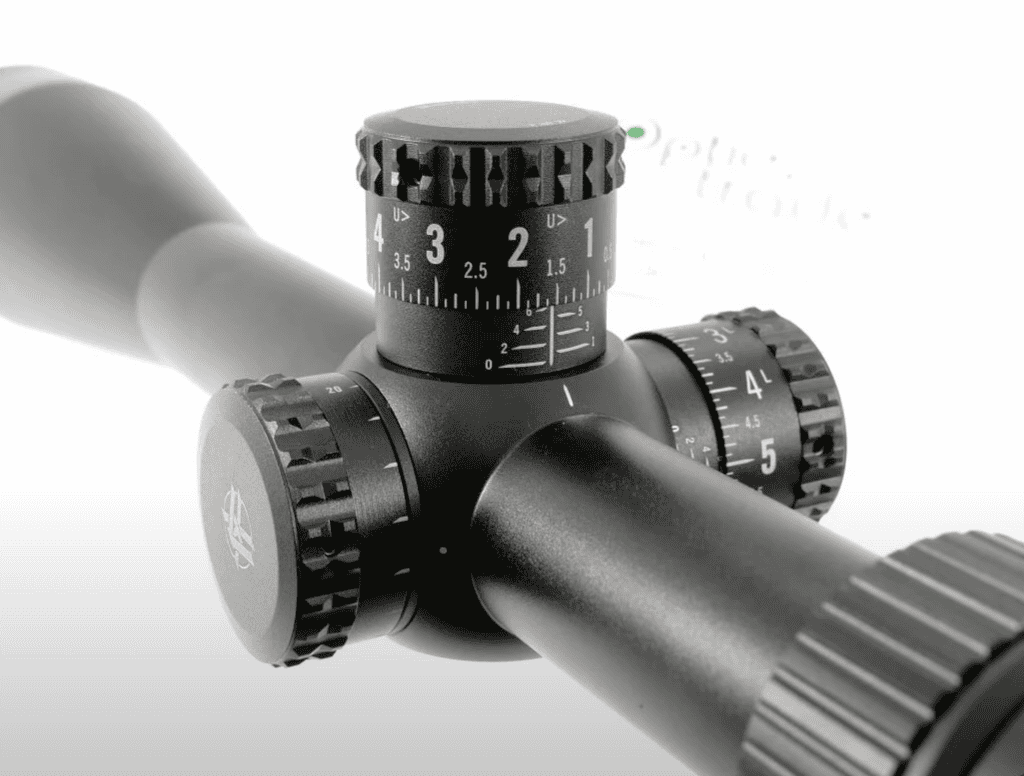
The exposed turrets lack zero stops, which is unusual for a premium scope but reflects the Golden Eagle’s specific purpose. Competitors shooting at known distances on marked turrets don’t need zero stops the same way field shooters do. The parallax adjustment from 15 yards to infinity includes an aperture stop ring feature that broadens depth of focus, letting you keep the target sharp while observing downrange mirage and wind indicators—a competition-specific feature you won’t find on hunting scopes.
Not for General Use
At 29.7 ounces and 16.1 inches long, the Golden Eagle is one of the heavier and longer scopes in this test. The narrow field of view—6.3 feet at 100 yards even at 15x minimum magnification—makes target acquisition slow compared to hunting or tactical scopes. The 1.7-foot field of view at 60x is essentially a tunnel. You use this scope when you know exactly where your target is and need maximum magnification to assess conditions and confirm impacts.
The premium pricing reflects both the specialized application and the glass quality. This scope costs significantly more than the Viper PST Gen II and approaches Razor pricing, but you’re paying for features most shooters will never use. If you’re competing in F-Class or benchrest disciplines where 15-60x magnification and ultra-fine adjustments matter, the Golden Eagle makes sense. For any other application—hunting, tactical shooting, or general precision rifle work—the magnification range is excessive and the specialized features are wasted. The Golden Eagle represents Vortex’s answer to a very specific competitive shooting need rather than a general-purpose optic.
Field Test Data
| Test Parameter | Result |
|---|---|
| 100-Yard Group (60x, benchrest) | 0.61 MOA average across 5 groups |
| Bullet Hole Visibility (600 yards, 60x) | Individual .30 caliber impacts clearly visible on paper |
| 1/8 MOA Click Precision | Turret adjustments repeatable and predictable for fine-tuning groups |
| Mirage Reading Capability (40x) | Aperture stop ring allowed simultaneous target focus and mirage observation |
| Chromatic Aberration (60x) | Minimal CA on high-contrast edges despite extreme magnification |
Tested with: Bergara B-14 HMR .308 Winchester | Hornady ELD Match 178gr
Pros and Cons
PROS
|
CONS
|
Performance Ratings
Learn more about how I test and rate scopes.
The Golden Eagle HD 15-60×52 excels at exactly one thing—providing extreme magnification for F-Class and benchrest competition. For that specific application, it’s excellent. For everything else, it’s the wrong scope.
How I Actually Tested These Scopes
Testing seven Vortex scopes spanning their entire product lineup required matching each model to appropriate rifles and applications. I tested the Viper PST Gen II, Razor HD LHT, and Venom 3-15×44 on my Bergara B-14 HMR in .308 Winchester with Federal Gold Medal Match 168gr Sierra MatchKing ammunition—these scopes share similar precision-oriented applications where direct comparison makes sense. The Golden Eagle HD also went on the Bergara but with Hornady ELD Match 178gr loads to show its extreme-magnification capability at distance. For the Strike Eagle 1-8×24, I used an AR-15 in 5.56 NATO with Federal American Eagle 55gr FMJ, testing it exactly how AR owners would use that LPVO. The Diamondback 4-12×40 got mounted on a Ruger American in .243 Winchester with Hornady American Whitetail 100gr loads, while the Crossfire II 3-9×40 went on a Savage Axis in .308 with Winchester Super-X 150gr ammunition—both budget scope and budget rifle pairings that represent real-world usage.
Testing happened across multiple range sessions in North Texas during September and October. Weather ranged from overcast mornings in the low 60s to bright afternoons pushing 85 degrees, with one session in light rain that let me confirm waterproofing. I shot from prone with bipods for precision work, from benches for load development and zeroing, and did some offhand shooting with the Strike Eagle to test its low-magnification handling. Distances varied by scope purpose—25 to 300 yards for the AR setup, 100 to 400 yards for hunting scopes, and out to 600 yards for the precision and competition models. Each scope got zeroed at appropriate distances for its intended use, then I confirmed tracking through box tests or tall target ladder tests depending on turret style.
I tested but rejected twoc scopes that didn’t make this guide. A Viper HS 4-16×50 (first generation, not the current HS-T model) had significant eyebox issues at higher magnifications that made it frustrating to use compared to the PST Gen II. And a Venom 5-25×56—the larger brother of the 3-15x I did test—weighed 34 ounces and felt front-heavy on every rifle I mounted it on, making it impractical despite decent optical performance.
Get more information on how I test optics here.
What Shooters Get Wrong About Vortex Scopes
Assuming the VIP Warranty Means All Vortex Scopes Perform Equally
The VIP Warranty covers every Vortex scope from the Crossfire II to the Razor HD, and shooters sometimes interpret that to mean optical and mechanical performance is comparable across the lineup. It’s not. The Crossfire II has entry-level Chinese glass with noticeable chromatic aberration and edge softness. The Razor uses Japanese LOW factory glass that holds clarity at extreme magnification. The warranty means Vortex will fix a broken scope regardless of which tier you bought—it doesn’t mean a budget scope performs like a premium one before it breaks.
Buying More Magnification Than the Application Requires
Vortex’s lineup spans 3-9x hunting scopes to 15-60x competition glass, and shooters often buy higher magnification than they’ll actually use. I’ve watched hunters put 5-25x scopes on deer rifles where they’ll realistically never dial past 12x. More magnification narrows your field of view, makes the image dimmer, exaggerates movement and mirage, and adds weight. Match the magnification range to your actual shooting distances. If you’re hunting whitetail inside 300 yards, the Diamondback 4-12x covers what you need without the bulk of a Viper PST.
Not Understanding Second Focal Plane BDC Limitations
Vortex’s budget scopes use second focal plane BDC reticles—the Dead-Hold BDC on the Diamondback and Crossfire, or the AR-BDC3 on the Strike Eagle. These reticles only provide accurate holdover subtensions at maximum magnification. If you zero the Diamondback 4-12×40 at 100 yards and dial down to 6x for a closer shot, the BDC marks no longer correspond to the distances Vortex advertises. Many shooters don’t realize this limitation and wonder why their holdovers don’t work at partial magnification.
Expecting Entry-Tier Scopes to Handle Precision Applications
The Crossfire II costs less than two boxes of premium ammunition. Shooters sometimes mount it on a precision rifle expecting half-MOA groups and perfect tracking, then blame the scope when it doesn’t deliver. Entry-tier scopes are built to a price point—adequate glass for hunting-sized targets in good light, turrets that hold zero but may not return perfectly after significant adjustment. If you’re building a precision rifle for 600-yard steel or competing in matches, start with the Viper PST or Venom as minimum. Budget scopes serve budget applications.
Your Questions Answered
What’s actually covered under Vortex’s VIP Warranty?
Vortex repairs or replaces damaged or defective scopes at no cost regardless of how the damage occurred or who owns it. The warranty is fully transferable and doesn’t require receipts. It doesn’t cover loss, theft, or deliberate damage, but it does cover everything else—drops, impacts, manufacturing defects, or normal wear. You pay shipping to Vortex; they pay return shipping.
Should I get MOA or MRAD reticles and turrets?
Both work fine if your reticle and turrets match. The Viper PST, Razor, and Venom offer both options. MOA is slightly more intuitive for shooters thinking in inches at 100 yards. MRAD is faster for mental math at varying distances and dominates competition shooting. Pick whichever system you’re comfortable with, but ensure your reticle subtensions match your turret adjustments—don’t mix MOA reticles with MRAD turrets.
How do Vortex’s product lines rank in quality?
From top to bottom: Razor HD, Golden Eagle HD, Viper, Strike Eagle, Venom, Diamondback, Crossfire II. The Razor uses premium Japanese glass and premium features. Viper is mid-tier with Philippine assembly and good glass. Strike Eagle and Venom occupy the value tier with Chinese manufacturing. Diamondback and Crossfire are entry-level. Each line also has multiple magnification options within it.
Do I need first focal plane or is second focal plane fine for hunting?
Second focal plane works perfectly fine for hunting where you’re not dialing turrets or using reticle holdovers at varying magnifications. FFP reticles stay calibrated at any magnification, which matters for tactical shooting or competition where you’re using the entire reticle for holds. For hunting with capped turrets and BDC holdovers at max power, SFP is simpler and usually less expensive.
Which Vortex scope competes with Leupold VX-5HD or Nightforce SHV?
The Viper PST Gen II sits in the same price and performance tier as Leupold VX-5HD and Nightforce SHV. All three offer FFP reticles, exposed turrets with zero stops, and good glass in similar magnification ranges. The Razor HD LHT competes with lightweight premium scopes like Leupold VX-6HD when weight matters most.
Which Vortex Scope for Your Needs?
If you’re hunting whitetail or similar game inside 400 yards and want a lightweight scope that handles brush and open country without breaking the budget, get the Diamondback 4-12×40. The magnification range covers close timber shots at 4x and extends to 12x for longer open-country work. Capped turrets protect your zero during transport, and the Dead-Hold BDC provides holdover reference for shots beyond your zero distance. At 14.2 ounces, it won’t overbalance a hunting rifle.
If you’re shooting precision rifle matches or dialing for distance regularly, the Viper PST Gen II 5-25×50 delivers the features you actually need. First focal plane EBR-7C reticle stays calibrated across the magnification range, exposed turrets with RZR zero stop let you dial with confidence, and the glass quality handles low light better than scopes from the tiers below it. This is where Vortex stops compromising on tactical features.
If you’re running an AR-15 for home defense, three-gun competition, or hog hunting and need close-quarters speed plus magnification for distance shots, the Strike Eagle 1-8×24 is purpose-built for that application. True 1x lets you shoot both-eyes-open at close range, and the 8x top end extends your effective distance well past what a red dot can manage. The AR-BDC3 reticle provides holdovers calibrated for 5.56 trajectories.
If you’re hunting in the mountains where every ounce matters and need premium optical performance for dawn and dusk shooting, the Razor HD LHT 4.5-22×50 delivers Razor-tier glass at 21.7 ounces. That weight savings transforms how a rifle carries over miles of elevation. The 4-inch eye relief is the most forgiving in Vortex’s lineup, and the Japanese glass maintains clarity when shooting light gets marginal.
If you’re building your first hunting rifle on a tight budget and need something that’ll hold zero through deer season without spending serious money, the Crossfire II 3-9×40 gets you functional glass backed by the VIP Warranty. The optical performance won’t impress anyone who’s looked through premium scopes, but it’ll serve its purpose on a budget rifle while you spend money on ammunition and range time instead of premium optics.
Disclosure
I purchased all seven Vortex scopes tested in this guide with my own money through normal retail channels. Some product links in this guide use affiliate codes, meaning I may earn a small commission if you purchase through those links at no additional cost to you. These commissions help support the continued testing and honest evaluation of rifle scopes. My recommendations remain independent and are based solely on actual testing performance—I don’t accept payment from manufacturers to influence scope reviews or rankings.
Final Thoughts
Testing seven scopes across Vortex’s entire product range confirmed what I suspected from years of watching shooters navigate their lineup—the VIP Warranty creates a false sense of equivalence. Every Vortex scope gets fixed if it breaks, but that doesn’t mean they all perform the same before breaking. The Crossfire II delivers entry-level glass appropriate for basic hunting. The Diamondback steps up to budget-friendly capability for shooters who know their limitations. The Venom and Strike Eagle occupy value territory with specialized applications. The Viper PST Gen II is where Vortex finally delivers serious tactical features without compromise. The Razor LHT achieves premium optical performance in a lightweight package. And the Golden Eagle serves a competition niche that most shooters will never need.
The Viper PST Gen II 5-25×50 won this evaluation because it sits at the intersection of capability and value within Vortex’s lineup. Below the Viper tier, you’re making trade-offs—capped turrets, second focal plane limitations, reduced glass quality, or specialized applications that don’t translate across shooting disciplines. Above the Viper tier, you’re paying premium prices for weight savings or extreme magnification that only matter in specific scenarios. The PST Gen II gives you first focal plane reticles, RZR zero stop turrets, and glass quality that performs in low light, all at a price point that makes sense for serious shooters who aren’t trying to justify Razor premiums.
Choosing the right Vortex scope requires understanding what each product line actually delivers rather than assuming the warranty makes them interchangeable. If you’re hunting whitetail inside 300 yards, the Diamondback 4-12×40 covers what you need without wasting money on features you won’t use. If you’re building a precision rifle for long-range work, start with the Viper PST as your baseline and only move up to Razor if weight or extreme magnification matters critically. And if you’re new to shooting with limited budget, the Crossfire II gets you on target with warranty backing while you save money for ammunition and practice.
The VIP Warranty removes risk from buying Vortex, but it doesn’t remove the need to match scope capabilities to your actual shooting applications. Buy the scope that delivers the features your shooting demands, not the one with maximum magnification or premium tier designation. Vortex built seven distinct product lines because shooters have seven distinct sets of needs—understanding which line serves your purpose matters more than which line sits highest in their hierarchy.
Vortex scopes are good so they feature on my rifle scopes under $500 and rifle scopes under $300 guides as well.
Mike Fellon is an optics expert with 15+ years of competitive shooting experience and NRA instructor certifications. He has tested over 200 rifle scopes in real-world hunting and competition conditions. Based in Dallas, Texas.

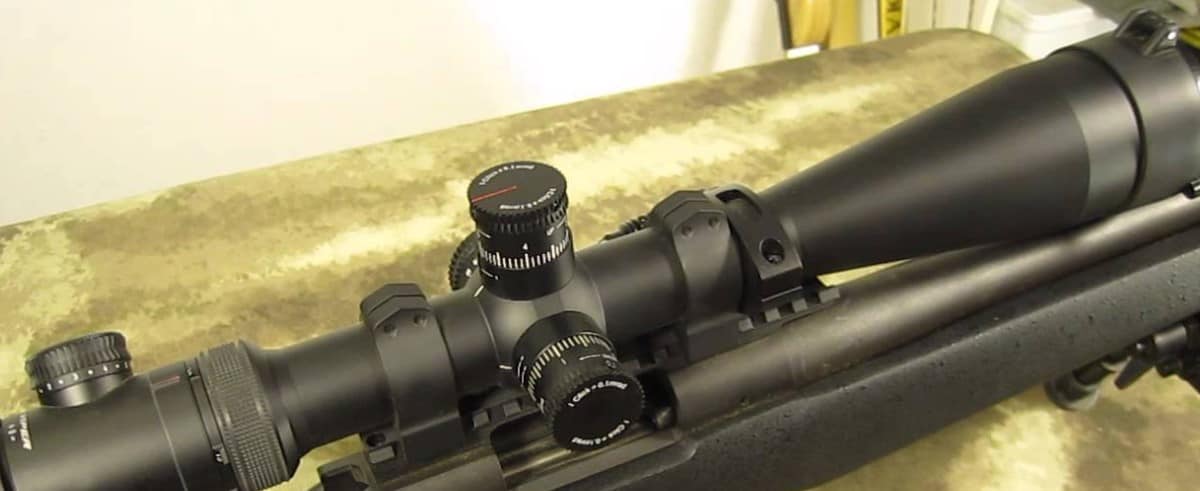
Great roundup of Vortex scopes! I’ve been using Vortex for years and have always been impressed with their quality and performance. The Viper HS-T 6-24×50 sounds like a great option for long-range shooting, with its impressive zoom range and clear optics. I’m also a big fan of the Diamondback Tactical series for its affordability and durability.